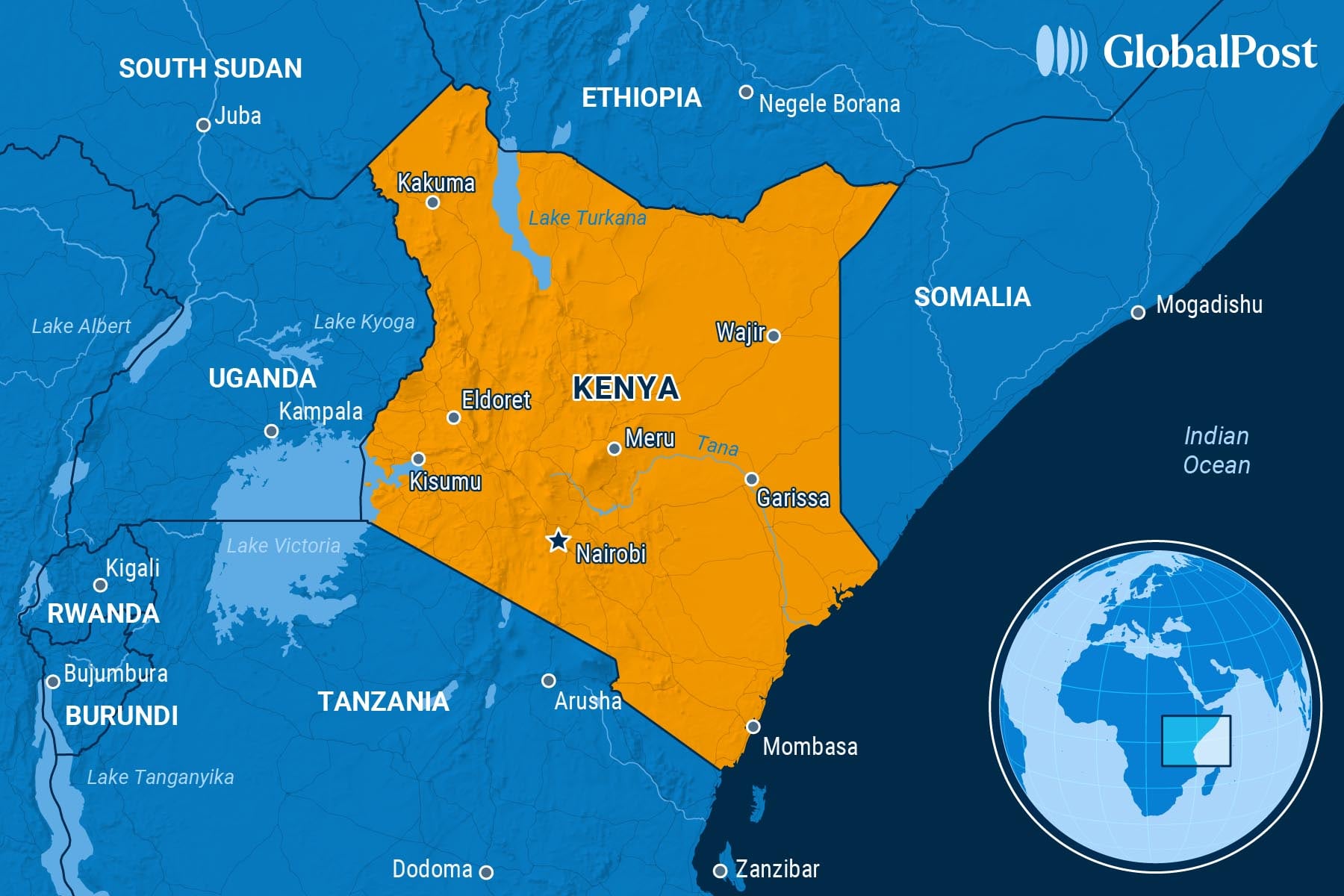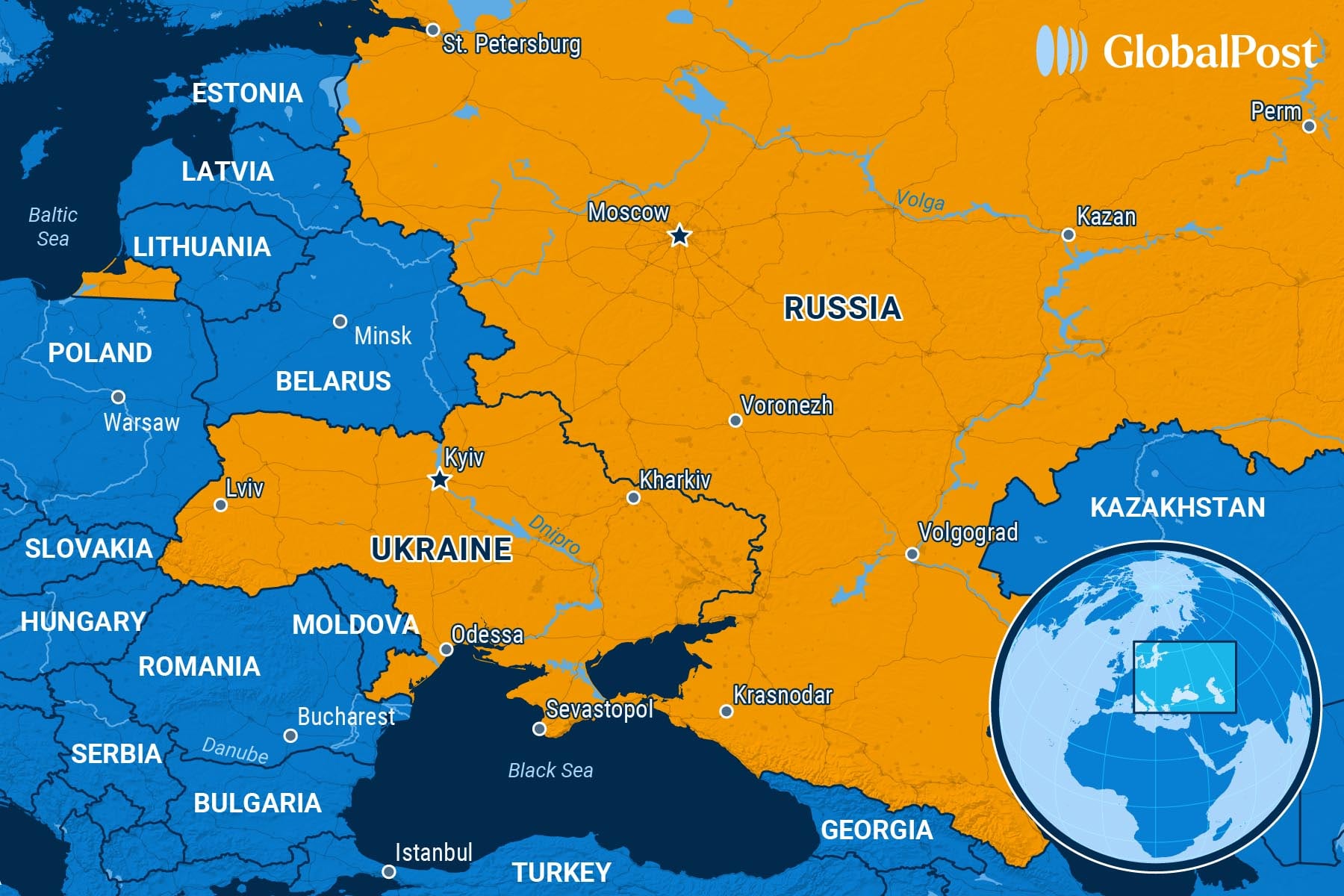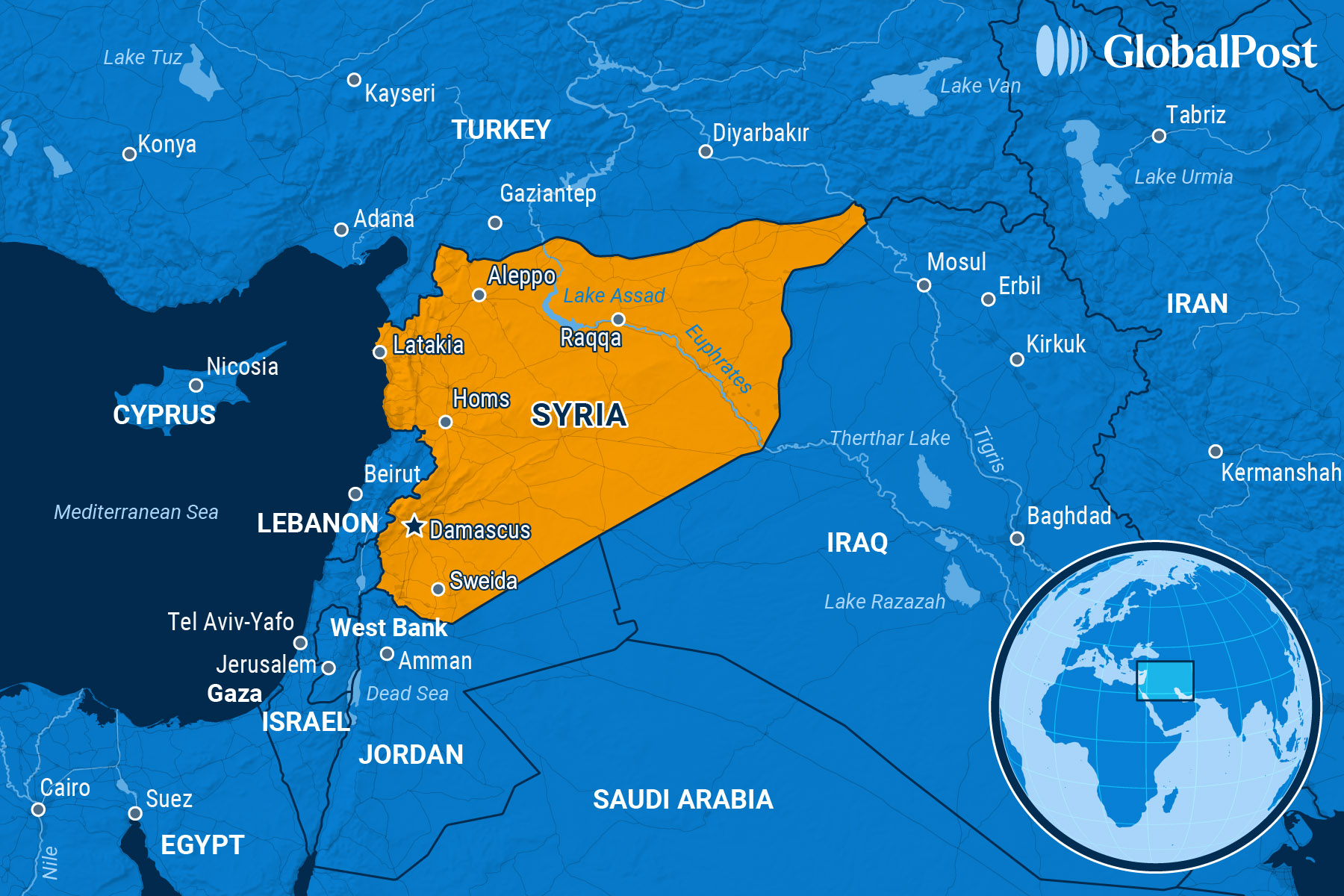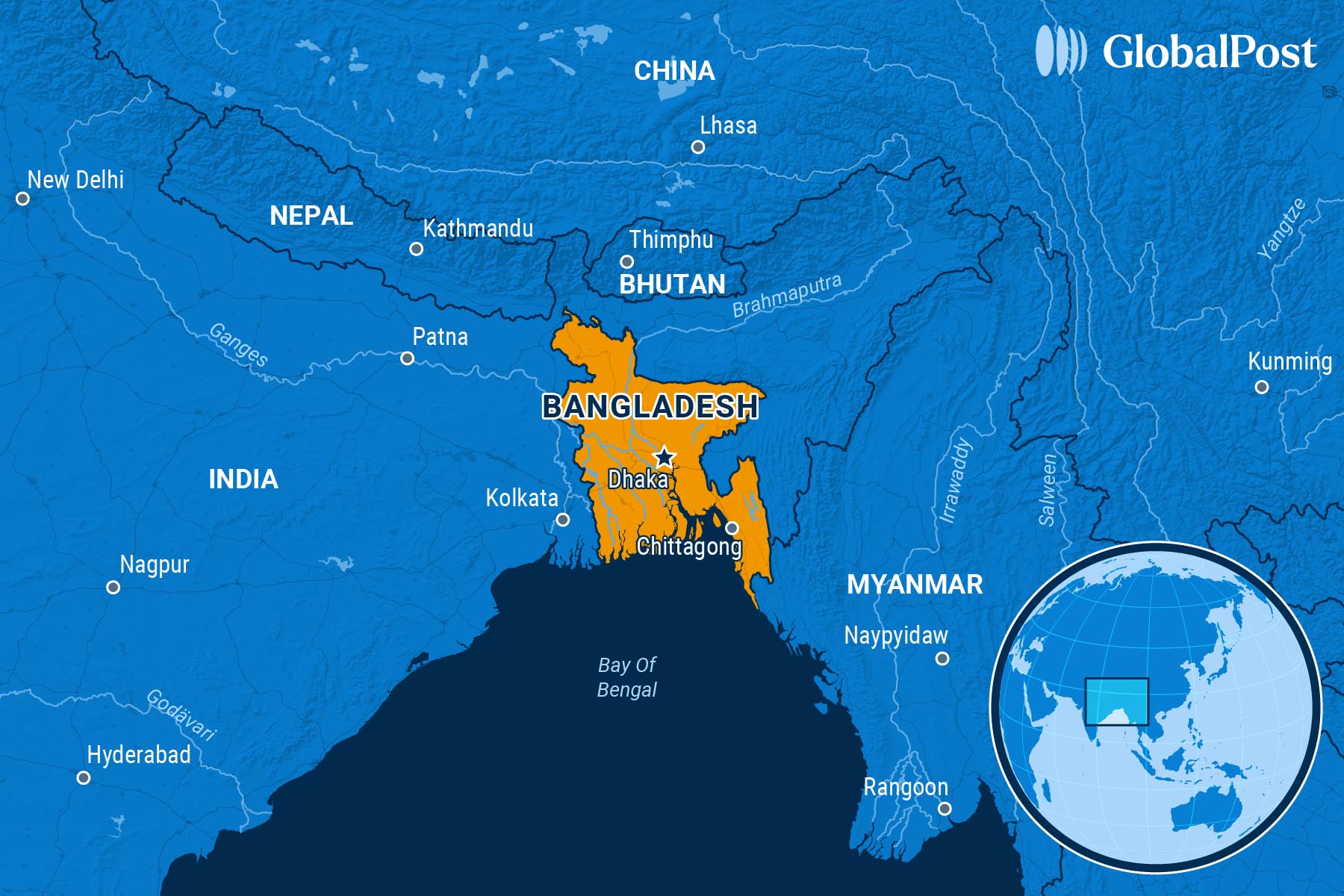Protests and Funerals: Kenyan President’s Failure to Listen Threatens Kenya’s Stability
NEED TO KNOW
Protests and Funerals: Kenyan President’s Failure to Listen Threatens Kenya’s Stability
KENYA
 Vendor Boniface Kariuki, 22, was selling masks at a rally against police brutality in June in his hometown of Kangema near the Kenyan capital of Nairobi when a police officer in riot gear asked him to move.
Vendor Boniface Kariuki, 22, was selling masks at a rally against police brutality in June in his hometown of Kangema near the Kenyan capital of Nairobi when a police officer in riot gear asked him to move.
He did.
The officer shot him anyway.
The incident, captured on film, ricocheted around Kenya, setting off fury around the country over police brutality and at a government that many see as corrupt, unaccountable, and murderous.
“We can’t feed our families, so we have to be on the street to stop the increasing prices, to stop the (police) abductions, and to stand up for our country,” Festus Muiruri, a 22-year-old protester in Nairobi, told Reuters. “We want the president to hear us.”
Kariuki is one of more than 100 people who have been killed across Kenya since last year, when protests initially broke out against tax hikes on everyday items such as bread and cooking oil: These hikes came as the average Kenyan struggled with a cost-of-living crisis while accusing government officials of living extravagantly.
Those demonstrations, led by Kenyan youth, were met with a violent crackdown. They culminated with protesters storming the parliament. The government backed off its tax measures.
Now, a year later, the protesters’ calls for an end to government corruption and justice for those killed in 2024 were never resolved, say analysts, just put away for the next time public anger was triggered.
It was in June after the death of a teacher and blogger, Albert Ojwang, in police custody. He was arrested for “the offense of false publication” and died of “self-inflicted” wounds, which the state pathologist refuted.
Protests broke out over Ojwang’s death, leading to the rare arrest and resignations of those involved.
However, on July 7th, demonstrations against the government ignited again after Kenyans marched to mark the anniversary of a 1990 uprising known as the “Saba” (Swahili for Seven-Seven) protests that returned the country to a multi-party democracy after years of autocratic rule by then-President Daniel arap Moi.
The government, led by President William Ruto, however, moved in forcefully, with police using live bullets, teargas, and water cannons, also hitting the relatives mourning the death of loved ones last year. At least 31 people died.
Now protesters are calling for the president to step down, yelling, “Ruto must go” and “wantam” (one term) at rallies.
The government has gone on the offensive, calling protesters terrorists who are orchestrating a “coup,” with Ruto ordering police to “shoot their legs and take them to court.” Hundreds have been arrested.
The government also threatened the media if it didn’t halt its coverage of the protests.
The protests have created tremendous turmoil in Kenya, East Africa’s economic heavyweight, with shops and businesses closing, and some even destroyed by protesters and looters. They are also scaring off tourists and investors.
Another impact is on Ruto himself. Elected in 2022 with the help of young voters on promises to improve their lives and put a stop to police brutality, extrajudicial killings, and corruption, he will face a tough election in 2027. Analysts say the likelihood of his resignation is low – one big issue is that there is no obvious successor: In March, Ruto allied with former Prime Minister Raila Odinga, previously his main rival.
Regardless, his political capital is far lower than it was three years ago, much of that due to a promise he made when he was elected and then promptly broke – he told his young supporters he would listen to them.
“If the Ruto administration is failing at every turn, it is because Ruto struggles with the very concept of democracy, adamantly refusing to listen, let alone respond to any kind of dissent,” World Politics Review wrote. “Yet Kenyans have a clear vision of what kind of society they want to live in, and it is not one in which an impervious ruler barricades himself in a tower dictating to the people below by force and fiat. They want to be heard.”
On the last day of June, Kariuki died of his wounds at a local hospital, another victim of Ruto’s unwillingness to listen, the magazine added.
The officer who shot him has been charged with murder. A plea hearing is set for next week.
Regardless, observers say the protests will go on, as will the funerals.
“We are in sorrow,” Edwin Kagia, 24, Kariuki’s friend and fellow vendor, told Al Jazeera at the funeral. “I used to hear that police kill people, but I could not imagine it would happen to my brother.”
THE WORLD, BRIEFLY
Ukraine Calls For New Talks With Russia Amid Enhanced Sanctions
UKRAINE / RUSSIA
 Ukraine called for a new round of peace negotiations with Russia over the weekend, as both sides have come under growing international pressure to agree to a ceasefire, with the European Union approving the latest sanctions package against Moscow, Politico reported.
Ukraine called for a new round of peace negotiations with Russia over the weekend, as both sides have come under growing international pressure to agree to a ceasefire, with the European Union approving the latest sanctions package against Moscow, Politico reported.
In a Saturday address, Ukrainian President Volodymyr Zelenskyy said Ukraine’s newly appointed National Security and Defense Council Secretary Rustem Umerov had proposed “a meeting at the leadership level” with Russia for the coming week. The focus of the talks would cover issues such as a ceasefire, prisoner exchanges, and the return of deported Ukrainian children.
The president reiterated Kyiv’s readiness to negotiate, adding that “Russia must stop avoiding decisions.”
In response, Kremlin spokesperson Dmitry Peskov confirmed that Moscow had received the proposal, saying that Russia was “ready to move quickly” but maintained that its “objectives” remained unchanged: He was referring to Moscow’s calls for Ukraine to remain under its sphere of influence and pledge to stay out of NATO.
Previous talks between the warring sides took place in Turkey in early June, but collapsed barely more than an hour after they began. Russia reportedly demanded major territorial concessions as part of its preconditions for a ceasefire, which Ukraine has repeatedly refused, according to CNN.
Analysts said the renewed diplomatic push comes after US President Donald Trump threatened Moscow with a 50-day deadline to agree to a ceasefire or face sweeping tariffs on Russian goods, including “secondary tariffs” targeting countries that purchase Russian oil.
Trump has expressed frustration with Russian President Vladimir Putin, reportedly calling the latter’s recent ceasefire assurances “bullsh-t.”
Meanwhile, the EU finalized its 18th sanctions package since the war began in February 2022, aimed at tightening economic pressure on Moscow, Radio Free Europe noted.
The new measures include a new dynamic price cap on Russian oil exports that would lower the Group of Seven cap from $60 to $47.6 per barrel. The cap is designed to adjust automatically to stay within 15 percent of average long-term oil prices.
The measures also include a ban on transactions with the Nord Stream pipelines, targeting shipping insurers, and expanding enforcement against Russia’s “shadow fleet” – vessels bypassing sanctions to export oil.
EU Commission President Ursula von der Leyen said the bloc is “striking at the heart of Russia’s war machine,” and will maintain pressure until Russia ends its invasion. French Foreign Minister Jean-Noel Barrot said the sanctions are “unprecedented” and vowed to work with the US to “force Vladimir Putin into a ceasefire.”
Zelenskyy called the EU measures “essential and timely,” citing escalating Russian strikes on Ukrainian cities, including a recent barrage of over 300 drones and 30 missiles.
Calm Returns Following Ceasefire in Syria’s Sweida
SYRIA
 The fighting stopped in Syria’s southern Sweida province Sunday after a ceasefire between government forces and tribal militias took effect over the weekend, following a week of sectarian violence – the deadliest since the fall of the Assad regime in December – that also saw Israeli strikes on the capital Damascus, Agence France-Presse reported.
The fighting stopped in Syria’s southern Sweida province Sunday after a ceasefire between government forces and tribal militias took effect over the weekend, following a week of sectarian violence – the deadliest since the fall of the Assad regime in December – that also saw Israeli strikes on the capital Damascus, Agence France-Presse reported.
Witnesses and the United Kingdom-based Syrian Observatory for Human Rights said a “cautious calm” had prevailed since midnight Saturday, after a ceasefire announced by interim President Ahmed al-Sharaa appeared to take hold.
Syrian government forces were deployed to enforce the truce and block tribal fighters from entering the city. Local Druze fighters reportedly regained control of Sweida city by Saturday evening, the BBC wrote.
By Sunday morning, AFP correspondents confirmed no gunfire had been heard and that humanitarian convoys were preparing to enter the city.
The fighting erupted more than a week ago following the abduction of a Druze merchant by Bedouin tribesmen, which triggered retaliatory attacks among the two communities.
Syria’s Islamist-led government sent troops to stabilize the situation and enforce a ceasefire in the region. However, the violence continued with witnesses and human rights monitors accusing government forces of siding with Bedouin gunmen and committing abuses, such as summary executions and looting.
The situation prompted Israel to launch airstrikes on Syrian troops and the country’s capital, citing its obligation to defend the Druze community and enforce a demilitarized buffer zone near its border.
The Syrian Observatory estimated that at least 1,000 people were killed, including 336 Druze fighters, 298 Druze civilians, 342 government security forces, and 21 Sunni Bedouin. The United Nations said more than 128,000 people were displaced.
On Sunday, the Syrian Health Ministry announced preparations to deliver aid to Sweida’s main hospital, where bodies reportedly piled up amid severe shortages of medical supplies.
The recent fighting underscored the ongoing difficulties Syria’s new leaders face as they try to steer a nation devastated by more than 14 years of civil war.
Al-Sharaa condemned Israel’s intervention and called the violence a “dangerous turning point.” While pledging protection for minorities, he praised Sunni tribesmen who had mobilized – drawing criticism from human rights groups who accused him of legitimizing loyalist militias, the Washington Post noted.
Many minorities, including the Druze, Alawites, and Kurds, remain deeply suspicious of the Sunni Islamist-led government, which draws much of its force from former rebel and jihadist factions.
Bangladeshi Islamist Party Marches in Show of Strength As Some Fear Its Revival
BANGLADESH
 Hundreds of thousands of supporters of Bangladesh’s largest Islamist party took to the streets of the capital, Dhaka, over the weekend in a show of strength ahead of next year’s elections, days after violent demonstrations rocked the South Asian country’s interim government, the Associated Press reported.
Hundreds of thousands of supporters of Bangladesh’s largest Islamist party took to the streets of the capital, Dhaka, over the weekend in a show of strength ahead of next year’s elections, days after violent demonstrations rocked the South Asian country’s interim government, the Associated Press reported.
On Saturday, supporters of the Jamaat-e-Islami rallied in the capital in the largest public show of force since the ouster of former Prime Minister Sheikh Hasina in August, when student-led protests ended her 15-year rule.
The Islamist party issued a seven-point list of demands to the interim government led by Nobel laureate Muhammad Yunus, including a proportional representation electoral system, justice for past mass killings, institutional reforms, and the implementation of a new national charter.
It also called for a “new Bangladesh where Islam would be the guiding principle of governance.”
The Islamist party opposed Bangladesh’s independence from Pakistan during the 1971 Liberation War and fought with the Pakistani military against nationalist forces.
During Hasina’s rule between 2009 and 2024, many of the party leaders were later jailed and executed for crimes against humanity and others in 1971.
The party was banned for years and politically sidelined under successive secular and pro-liberation governments.
Observers said the weekend rally highlighted a shift in political power following Hasina’s removal, with critics warning that the Yunus administration is now tolerating Islamist mobilization.
Hasina’s Awami League denounced Saturday’s rally “a betrayal of the national conscience and constitutes a brazen act of undermining millions of people… who fought against the evil axis (in 1971).”
The Yunus-led administration has banned the Awami League, while Hasina is currently in exile in India. The former prime minister is facing charges of crimes against humanity related to her crackdown on protesters before her ouster.
The United Nations estimates that up to 1,400 people were killed in the July-August 2024 uprising.
Meanwhile, the new government has come under scrutiny for failing to restore security and ensure accountability amid rising political tension and factional clashes.
On Wednesday, tensions flared when pro-Hasina activists clashed with security forces in the Gopalganj district during a rally by the National Citizen Party – a new political party formed by the students who led the protests that deposed Hasina.
The violence left four dead and more than 50 injured, with videos showing armed men attacking police and torching vehicles, according to Al Jazeera. Authorities imposed a curfew and deployed armed personnel carriers.
Government officials pledged a swift investigation and blamed Hasina loyalists for the bloodshed.
DISCOVERIES
Shrinking Under Pressure
Cod today can fit neatly on a dinner plate but these fish used to be giants, measuring more than three feet in length and weighing up to almost 90 pounds.
A new study found that decades of intense fishing, combined with environmental change, not only shrank the number of cod in the sea but also played a role in how the fish shrank in size, altering their evolution.
“Selective overexploitation has altered the genome of Eastern Baltic cod,” said lead study author Kwi Young Han in a statement. “For the first time in a fully marine species, we have provided evidence of evolutionary changes in the genomes of a fish population subjected to intense exploitation, which has pushed the population to the brink of collapse.”
Together with herring, cod was the backbone of the Baltic fishery. But fishing for cod was banned in 2019 after the cod population began decreasing dramatically.
Even so, cod are not reverting to their original size.
One reason is that when fishermen fished with large nets, the smaller cod escaped, which presented an external pressure to remain smaller, researchers said.
It is difficult to connect the population’s decrease in size only to evolution and not consider other factors, like pollution or temperature change, they added. For example, warming ocean temperatures might play a role in the shrinking process, but researchers think that the phenomenon is too extensive to be caused only by temperature changes, explained the Smithsonian Magazine.
To carry out the study and find why cod shrank, researchers analyzed 152 fish otoliths – tiny, bone-like structures in the inner ear – caught in the eastern Baltic cod harvested between 1996 and 2019.
Otoliths serve as records of a fish’s annual growth, acting as biological timekeepers.
Then, researchers sequenced the DNA of each fish and identified specific genetic markers related to body growth that showed patterns of directional selection, meaning that their frequency systematically increased or decreased over time. These markers overlap with genes that influence growth and reproductive functions.
The study also showed that a known change in the cod’s chromosomes, a structural change in the genome that often helps animals adapt to the environment, was affected by directional selection.
Findings prove that the shrinking of cod has a genetic basis and that human actions, constituting an external pressure, have measurably shaped their DNA, predisposing cod to remain small as genetic variants related to larger body sizes became less common.
This evolutionary change carries significant consequences, as genetic variants related to faster growth and later maturation might already be lost as cod reach adulthood at smaller sizes and produce fewer offspring.
A loss of genetic diversity could curb the species’ ability to cope with future environmental changes.
“What we are observing is evolution in action, driven by human activity,” study author Thorsten Reusch told the Guardian. “This is scientifically fascinating, but ecologically deeply concerning.”
